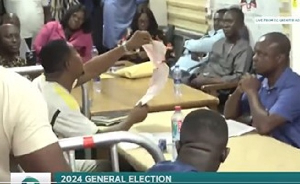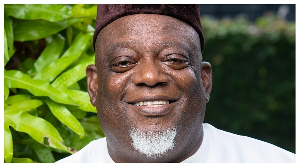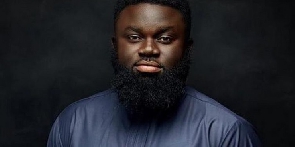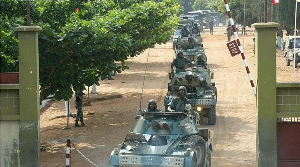The Kurt Okraku-led administration of the Ghana Football Association (GFA) has taken a new path to revive the game in the country with a varied hands-on approach and the early signs are hugely promising for a country blessed with football talents.
To match the talents, the GFA desperately needed a fresh approach to win the hearts and minds of football lovers in the country and the business community before it can once again begin to export its brand of attractive football to Africa and the world once again.
For a country that has won the Africa Cup of Nations four times, thrilled the world at the 2010 World Cup, only African nation to have won the U20 World Cup, two U17 World Cup titles as well as several accolades in women’s football in Africa and beyond, there was a crying need for a new approach.
This has been necessary because the Anas expose on football in the country three years ago completely obliterated the brand, painting the game in the most unflattering terms not only to the country but also to admirers of the game abroad.
And to repair the damage done to the game Kurt Okraku, the former football journalist and certificated football marketer with a Football Management MBA from famous the Liverpool University, championed the revival of the game on several fronts – integrity, reinvigorating competitions of the GFA and to change the communication approach of the federation.
With Okraku’s administration vigorously implementing these measures in just over one year in charge and despite the severe disruption caused by the coronavirus pandemic, interest in all aspects of the domestic is growing to even surpass the dizzying heights of the past thanks to the new style on the digital, technological and strategic standpoints.
After the troubled years, the need was to bring hurt and distant fanbase back through effective communication and tools to engage fans, enabling new digital behaviours which were not possible before.
Through its digital #bringtheloveback campaign and his knowledge and experience in the media, Okraku led the GFA to take advantage of new media to aggressively market its products to the public via social media by the fresh focus backed by the needed investment in manpower and training of staff.
The Ghana Football Association bought new equipment for the Communication Department to improve its work and to enhance performance.
The equipment acquired are five new video cameras, three digital and multipurpose still cameras and three live view gadgets to enhance the work especially in the area of Live streaming of matches and other GFA events.
The move formed part of the vision of making the products of the GFA easily accessible and readily available for public consumption.
The communication between the football federation and the fanbase has been totally transformed, working on: frequency and punctuality of publication, creativity and quality of the contents.
New handles have been created on its social media platforms for the various competitions on Facebook and Twitter ensuring that matches at all levels including the Division One League and Women’s leagues are streamed live to attract fans back home during the pandemic. These engaged fans will visit the various stadia when normality resumes.
Approximately 16 months after the new approach has dramatically increased the total user and engagement base reaching more than 60 million views through the Facebook Lives and other content placed on the various platforms.
With this hard incontrovertible data, Ghana football can go to market in normal times to exact commercial value from the fans it is gathering around its football products in the country and beyond which will surely attract corporate sponsorship to the football competitions and other products of the GFA.
These new dynamics have materialized through the implementation of the new approach to better know the fans, gathering precious data as well as giving fans a tool to have Ghana football always at their fingertips.
The results of the made available tools (assisted by the ones related to the communication strategy) are the proof of the desire and the need of fans to have similar touchpoints to interact directly with Ghana football in general.
The ambitions of a great come-back in Ghanaian football could not have been possible without a high digital positioning through a fast, lean and interactive communication on social media.
This has never been seen before by any federation among the 54 countries in Africa and this approach when fully mastered can be exported to other African federations to help shape their game via the new Ghanaian approach.
Sports News of Tuesday, 2 February 2021
Source: ghanasoccernet.com

















